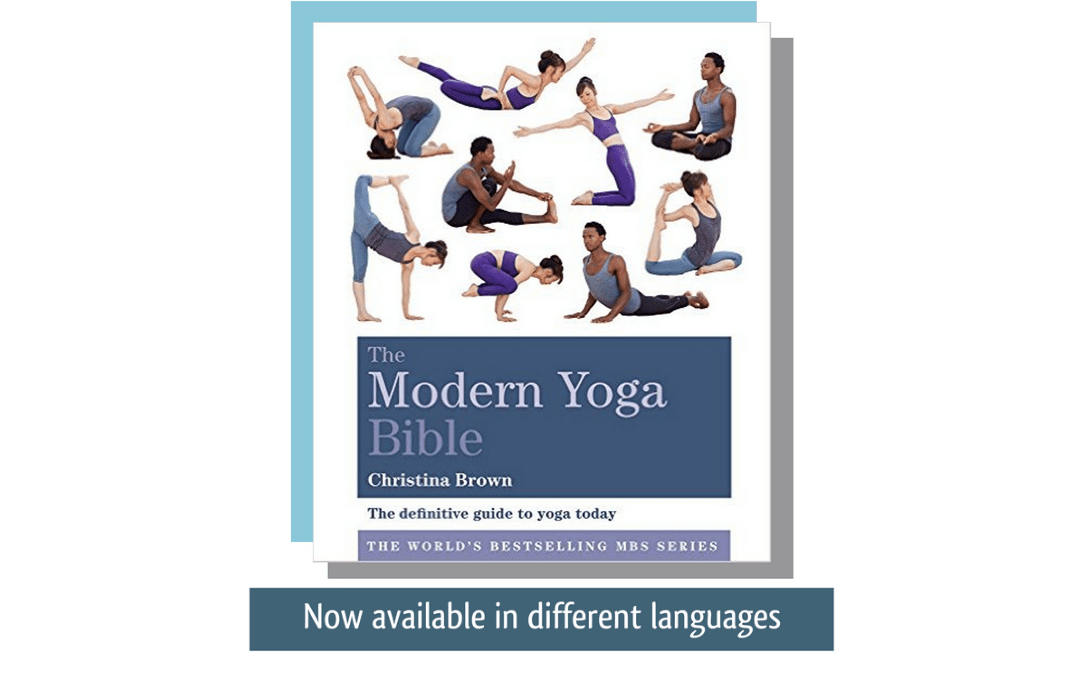Christina’s latest book, The Modern Yoga Bible: The Definitive Guide To Yoga Today arrived with a splash and is now already available in several other languages! Grab your copy on Amazon Today.
Lots has happened over the past 15 years since the Classic Yoga Bible was written. Probably just like your own life, Yoga practices have sped up a little. And at the same time, as if to compensate, other yoga practices have slowed down too! The book has some flowing practices, some slow Yin Practices, Restorative Yoga, some strong stuff, some soft stuff, a bit of philosophy to ponder on!
If you are like me, you might have set a new year’s resolution or two. So it seems an apt time to consider new science on how the brain works. When the original Yoga Bible was written 15 years ago it was thought the brain was hard wired by age of five or six. Well, we have since updated this understanding with the concept of neuroplasticity. Neuroplasticity has shown us that our brains are in a constant state of reorganisation depending on how they are being used. Repeated, consistent patterns created by new experiences can change the brain. (You can think of the brain as a bit like a muscle – the worked out bits get stronger while the unused parts get weaker.) With this in mind it becomes important to fortify the positive patterns and the yoga texts were all clear on this millennia ago. The ancient yogis knew back then the importance of a consistent yoga practice as being the key to success. Consistent practice affects how we feel, how we deal with our emotions, how aware we are of our bodies and how integrated we are on all levels. These benefits will carry through to your life off the mat. Of course, this can all fit in perfectly with your new years resolutions too.
Neuroplasticity also tells us what happens when you connect your intention and concentration with your breath and physical movement. Over time you form a positive association and it feels good. There’s even a catch phrase for how the neural pathways behave. They say, “What Fires Together, Wires Together.” This is why you can quickly ‘drop in’ to your pleasant ‘yoga zone’ as soon as you stand on the mat. (I find I ‘drop in’ to that bliss zone easily when I focus on pilates too) You may notice that first single upwards sweep with your arms in a Sun Salute, makes you instantly feel better, harmoniously integrated, calm and at ease. It also means that after some time with a regular meditation practice you can centre down to a deep meditative mindset fairly efficiently when you sit.
It’s important the realise that the continued rewiring of the brain works the other way too. Each time you feel stressed you are reinforcing the neural networks for that uncomfortable experience. This is where regularity of practice is important, so you can continue to amplify the good stuff and dampen down whatever you don’t want to reinforce.
The nervous system has a neat reward system which hatha yoga is perfectly positioned to take full advantage of. The body releases feel-good chemicals called dopamine and endorphins. While there are lots of other experiences that can make this happen too – listening to music, communal experience and other types of exercise, there is a kind of sacred biochemistry with Hatha Yoga practice. During yoga practice, the combination of mindfulness, deep breathing and movement triggers the release of these chemicals, amplifies the positive rewiring of the brain and transformation occurs. Mindfulness, deep breathing, slowing movement plus meditations is the perfect ingredients to help you become less reactive, heal old wounds and deal with stress better. You will become more appreciative for all you are and have. You will feel happier and healthier, you’ll enjoy your body more, open more fully to love and be more at peace in the world.
So, we are planning a party to launch the book. You’re invited! Save the date – Friday evening March 17th, and read on below for how to RSVP!
-Christina

